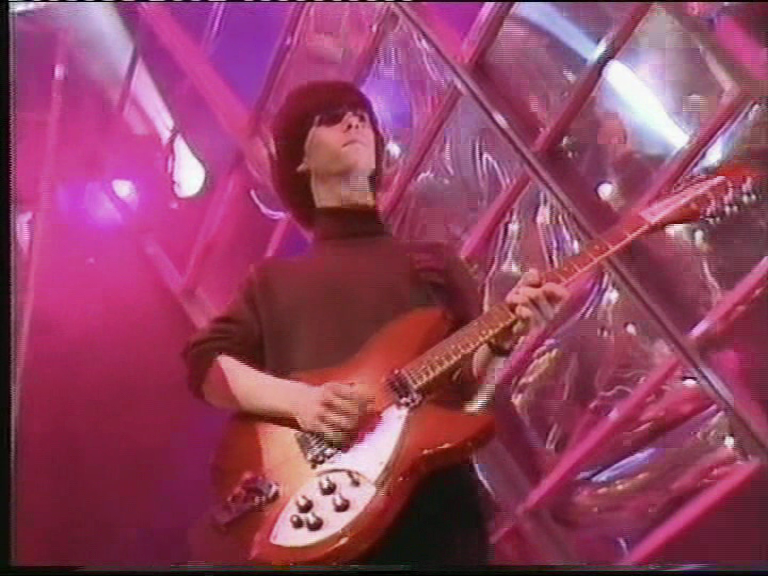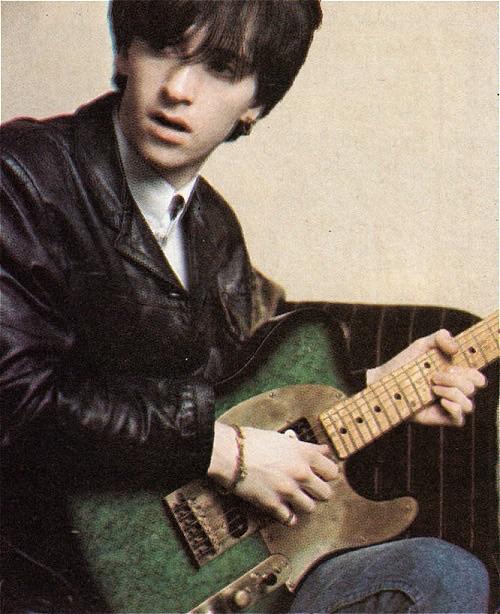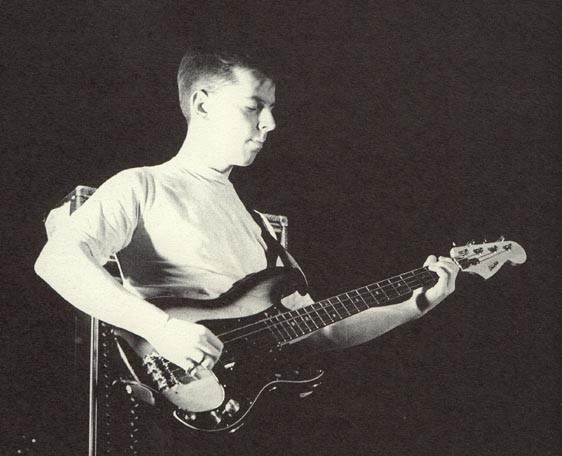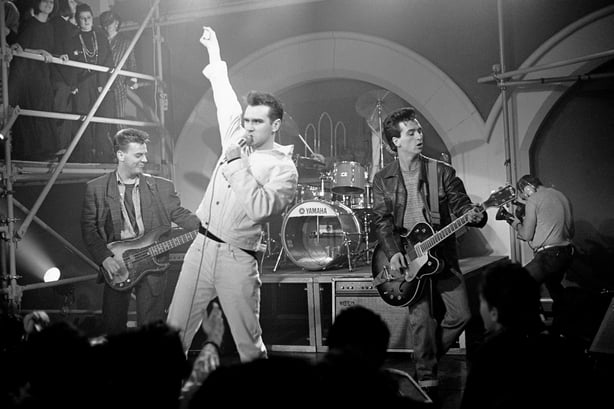A look into the gear behind The Smiths, Morrissey, Johnny Marr, Andy Rourke and Mike Joyce - the original jangle rocking sad boys who won hearts the world over.
With an unmistakably honest sound and provocative lyricism, The Smiths are arguably the most iconic indie-rock band of all time, with their legacy still having an impact on the music of today.
Read up on all the latest features and columns here.
Despite intentionally giving themselves “the most ordinary name”, The Smiths produced a brand of genre and era-defining music, bridging the genre gap between the New-Wave and Britpop that flooded the British Isles in the ’70s and ‘90s, respectively. While playing a major role in the popularity of Indie music in the Western world, The Smiths themselves also evolved their sound throughout their discography. From the band that graced the stages of student music shows, to the sensations that took the world by storm – these are the musical tools that The Smiths called their own.
Guitars
Rickenbacker 330
A major contributor to The Smiths classic jangly guitar sounds, Johnny Marr’s workhorse was a 1983 Rickenbacker 330 six-string in Jetglo. Marr used this on most of The Smiths’ self-titled album, early live shows, and sporadically for the rest of their studio discography. This unit was unique as it was fitted with Grover tuners; rare for a 330. This guitar was also used live by The Smiths’ second guitarist, Craig Gannon.
Rickenbacker 360/12

Admitting that he was attempting to channel George Harrison during the recording of ‘The Headmaster Ritual’, Marr also played a Rickenbacker 330 of the twelve-string variety. Featuring the same great jangle of the six-string, and additional harmonic saturation, Marr then started playing a 1964 Rickenbacker 360/12 in Fireglo, which had previously belonged to Pete Townsend. This was used in the middle to latter stages of The Smiths’ recordings and performances.
Fender Telecaster

Belonging to producer John Porter, a 1954 Fender Telecaster was used by Johnny Marr on many Smiths hits, which are commonly believed to only feature Rickenbacker guitars due to the chime of the tracks. The iconic opening riff of ‘This Charming Man’ was played on this ’54 Tele, which supposedly featured on every The Smiths song that John Porter produced.
Amplifiers
Roland Jazz Chorus 120 & Fender Twin Reverb
The bulk of Johnny Marr’s guitar sound during his time in The Smiths was produced by playing his Rickenbacker into a blend of two amplifiers; the Roland JC120 and the Fender Twin Reverb. By combining the crystal clear top-end of the JC120 with the comparative warmth of the Twin Reverb’s lower and middle frequencies, Marr utilised the best of both worlds to produce a tone that was full and articulate. For the early live shows, he used a single amp; whichever out of the two sounded best during soundcheck. Interestingly, Marr has reflected back onto his sound from this era, claiming that his tone could have “been so much better if [he] had just used a Fender Twin”.
While he did also use a Fender Pro at times, especially during The Smiths’ early years, the Fender Blackface Twin became Marr’s amplifier of choice from The Queen is Dead onwards.
Effects
Despite his retrospective criticisms of the JC120’s tonality, Johnny Marr was highly fond of the effects built into the Jazz Chorus that he owned. His model featured a split-stereo design, with separate buttons for vibrato and chorus – both of which he used on the majority of sessions that the JC120 was used for.
Roland BOSS Stomp Boxes
The Boss CE-2 was the original chorus pedal, and a feature throughout The Smiths live shows and records. The CE-2 was often seen plugged into Marr’s Fender Twin Reverb on stage. Also used was the GE-6, Boss’ compact Graphic Equalizer. For more driven sounds, Marr occasionally used a Boss OD-2 overdrive pedal. This effect was visible on stage during The Smiths memorable performance on ‘The Old Grey Whistle Test.’
Rack Effects
To emulate the two separate guitar parts in ‘How Soon is Now’ live, Marr split his guitar signal, with one going into a vibrato, then a rack delay unit, probably a Bel BD40 delay. This signal then passed into the Fender Twin, with the clean split feeding into the JC120. Marr altered his tuning and “held” the delay in the verses to simulate the sound of two guitar tracks.
Bass Guitars and Amplifiers

Guild B-301
In the early months of 1983, Andy Rourke almost exclusively played this four-string oddity. Featuring an offset body style, and a combination of contours and sharp angular edges, this was Andy’s first bass, and appeared on stage with him for their first run of shows.
Squier Precision Bass
From the Guild B-301, Rourke took a sidestep to a Japanese P-Bass copy, before settling on this black Squier Precision Bass for nearly a couple of years. Going through a pickguard change or two, this bass featured in some of The Smiths’ music videos. This was one of the first of Rourke’s Fender-style basses.
Fender Precision Bass
After playing several copies and Squiers, Rourke’s most famous instrument was perhaps his 1964 Fender Precision, in the classic sunburst finish. Picked out as it was made in the year he was born, this bass had scars from top to toe, and was broadcast on a number of live shows and Television specials.

Amplifiers & Effects
Early on in The Smiths’ life, Rourke played a Peavey Musician Bass amplifier into 1 x 15” and 4 x 10” cabinets, and then began using Trace Elliott GP11 Heads, and finally, Ampeg amplifiers. He used a combination of 15” and 10” speakers throughout.
While keeping his tone fairly simple from an effects perspective, Rourke did utilise similar effects to what Johnny Marr did; namely the Boss CE-2 and the Boss GE-10 (in contrast to Marr’s GE-6).
Drums
While information regarding Mike Joyce’s drum kit is few and far between, especially during his time in The Smiths, he has been pictured playing Premier Drums in The Smiths’ early years, and Yamaha drums later on, such as at Dublin’s Cathedral Club in 1987.

Interestingly, ‘The Queen is Dead’ Engineer recorded Joyce playing the elements of the drum kit separately, using these to form a drum loop that features in the released track. In combination with concrete walls and larger halls, these rooms and techniques captured some massive drum sounds – a vital component of The Smiths’ music.
While much of The Smith’s musical instrument and equipment choices are simple, industry standard offerings, the combination of their tasteful playing, and clever production techniques assisted them to achieve a very unique sound. Through experimenting with different guitars, effects, and signal splits, they found a sound that served as a vessel for some of the biggest Indie Rock tracks of all time.
View this post on Instagram
Looking for more The Smiths content? Check out Johnny Marr’s most iconic moments.

